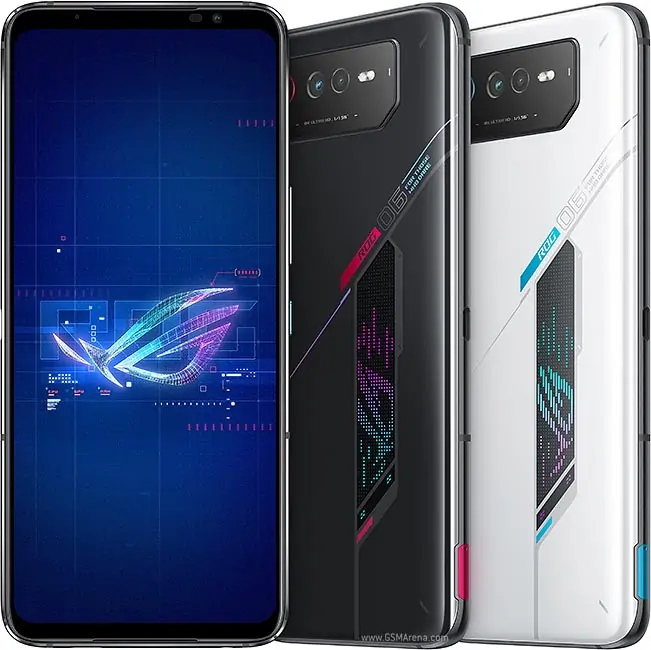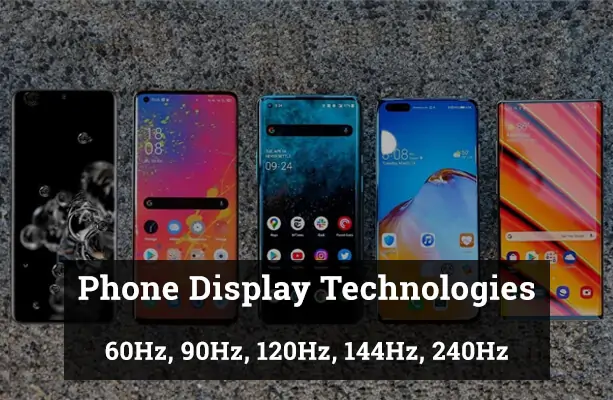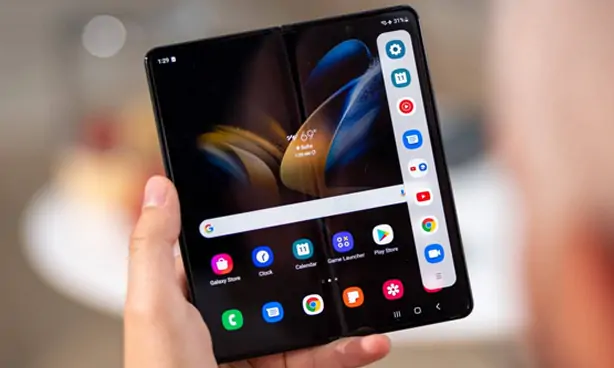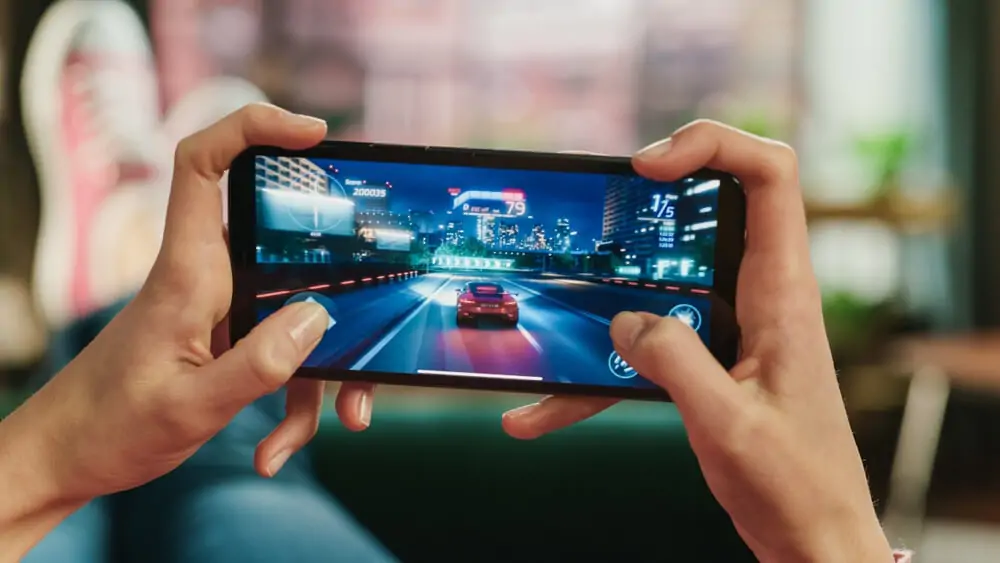In the ever-evolving world of smartphones, display technology has become a crucial factor that significantly impacts user experience. Choosing the right display can be overwhelming, with various options like 60Hz, 90Hz, 120Hz, 144Hz, and 240Hz. This article aims to demystify these terms and provide a detailed comparison in terms of features, benefits, pros, and cons.
What is Display Refresh Rate?
The display refresh rate is a critical factor that defines the visual performance of your smartphone. Measured in Hertz (Hz), it indicates how often the screen updates with new images every second. A higher refresh rate, such as 90Hz or 120Hz, delivers a noticeably smoother and more fluid visual experience, making activities like scrolling through social media or playing high-end mobile games more enjoyable and immersive.
In today’s smartphone landscape, refresh rates have become a key differentiator, influencing everything from user experience to gaming performance. Whether you’re a casual user or a competitive gamer, understanding the importance of display refresh rates can help you make a more informed purchasing decision. Each refresh rate offers advantages and drawbacks, from the standard 60Hz to the ultra-smooth 240Hz, shaping how you interact with your device daily.
60Hz Displays
Features
Standard Refresh Rate
60Hz has long been the industry standard for smartphone displays. If you’re using a budget or even a mid-range smartphone, chances are it has a 60Hz display. This refresh rate is the baseline that most users are accustomed to, and it’s what developers first consider when designing apps and games.
Most Common
Due to its long-standing presence in the market, 60Hz is the most widely used refresh rate. It’s the safe bet that manufacturers often go for, especially when producing budget-friendly models. This widespread adoption means you’ll find a 60Hz display in everything from entry-level to older flagship phones.
Benefits
Battery Efficiency
One of the most significant advantages of a 60Hz display is its low power consumption. Higher refresh rates require more power to refresh the screen more frequently, which can drain your battery quickly. With a 60Hz display, you’ll likely get more screen-on time, making it ideal for users who prioritize battery life.
Wide Compatibility
Almost all apps and games are optimized for 60Hz displays. Whether scrolling through social media, watching videos, or playing less demanding games, a 60Hz screen will serve you well. This wide compatibility ensures a hassle-free user experience.
Pros
Affordable
60Hz displays are generally cheaper to produce, which translates to lower smartphone costs. If you’re on a budget or don’t require a high refresh rate for your daily tasks, a 60Hz display is a cost-effective choice.
Good for Basic Tasks
For everyday activities like texting, calling, web browsing, and watching videos, a 60Hz display is more than sufficient. These tasks don’t benefit significantly from higher refresh rates, making 60Hz a practical option for the average user.
Cons
Not Ideal for Gaming
While 60Hz may be adequate for less demanding games, it’s not the best choice for a smooth gaming experience. Higher refresh rates offer smoother motion and quicker response times, which can be crucial in fast-paced games. On a 60Hz display, you may experience screen tearing or noticeable lag.
Less Smooth Scrolling
When compared to higher refresh rates like 90Hz or 120Hz, scrolling on a 60Hz display may appear less smooth. This difference becomes particularly noticeable when scrolling through content-rich websites or social media feeds. While not a deal-breaker for most users, it’s a compromise you’ll have to make when opting for a 60Hz display.
90Hz Displays
Features
Improved Smoothness
The enhanced smoothness is one of the most noticeable improvements when upgrading from a 60Hz to a 90Hz display. Everything feels more fluid, whether scrolling through a webpage, flipping through your photo gallery, or navigating your phone’s UI. The 50% increase in refresh rate from 60Hz to 90Hz translates to a visibly smoother user experience.
Gaming-Friendly
As mobile gaming continues to evolve, so does the need for better display technology. A 90Hz display offers a significant advantage over the standard 60Hz, especially in games that support higher refresh rates. The smoother motion and reduced input lag can make a difference in fast-paced games where every millisecond counts.
Benefits
Enhanced User Experience
The improved smoothness isn’t just a spec on paper; you can feel it in daily use. Activities like scrolling through social media feeds, reading articles, or even simply navigating through your phone’s interface become more enjoyable with a 90Hz display.
Better Motion Resolution
Higher refresh rates like 90Hz offer better motion resolution, meaning fast-moving content appears clearer and more detailed. This is particularly beneficial in action-packed games or when watching high-frame-rate videos, as it reduces motion blur and provides a more immersive experience.
Pros
Balance
A 90Hz display strikes a good balance between performance and battery life. While it offers a smoother experience than a 60Hz display, it doesn’t consume as much power as 120Hz or higher refresh rates. This makes it a suitable choice for users who want to upgrade display quality without significantly compromising battery life.
Increasingly Affordable
As technology advances, features once exclusive to flagship models start trickling down to mid-range and even budget phones. The same is true for 90Hz displays, which are becoming increasingly common in more affordable smartphones, making it easier for a broader range of consumers to experience the benefits.
Cons
Slightly Pricier
While 90Hz displays are becoming more affordable, they still generally cost more than their 60Hz counterparts. This could be a factor to consider if you’re on a strict budget.
Not the Best for High-End Gaming
While a 90Hz display significantly improves over a 60Hz one for gaming, it’s not the ultimate choice for professional or high-end gaming. For those who take their mobile gaming seriously and are looking for the best possible performance, higher refresh rates like 120Hz or 144Hz would be more suitable.
120Hz Displays
Features
High Refresh Rate
With a refresh rate double the standard 60Hz, 120Hz displays offer an exceptional level of instantly noticeable smoothness. Whether scrolling, gaming, or watching videos, the high refresh rate ensures that motion appears more fluid and lifelike.
Flagship Standard
120Hz displays have become a defining feature of high-end smartphones. Brands like Apple, Samsung, and OnePlus often include 120Hz displays in their flagship models, making it a must-have for those seeking a premium smartphone experience.
Benefits
Exceptional Smoothness
The high refresh rate of 120Hz is not just a number; it translates to a visibly smoother and more enjoyable user experience. This is particularly evident in fast-paced games and high-definition videos, where the higher refresh rate minimizes motion blur and adds a level of realism.
Great for Multitasking
The benefits of a 120Hz display extend beyond just gaming and media consumption. The higher refresh rate also makes multitasking more efficient. Whether switching between apps, browsing multiple tabs in a web browser, or using split-screen, the experience is more seamless and responsive.
Pros
Premium Experience
A 120Hz display elevates the overall user experience, making every interaction with your device more enjoyable. Everything feels more premium, from the smoothness of the UI to the clarity of videos and games.
Future-Proof
As developers continue to optimize apps and games for higher refresh rates, having a 120Hz display ensures that your device remains compatible with future software updates. This makes your investment more long-lasting, as you’re less likely to miss out on enhanced features and improvements.
Cons
Expensive
The luxury of a 120Hz display comes at a cost. Smartphones featuring this high refresh rate are typically considered premium devices with price tags to match. If you’re on a budget, this could be a significant factor to consider.
Battery Drain
One of the trade-offs for the enhanced smoothness and clarity of a 120Hz display is increased power consumption. The higher refresh rate requires more energy to maintain, which can result in quicker battery depletion. If long battery life is a priority for you, this is an important consideration.
144Hz Displays
Features
Ultra-High Refresh Rate
144Hz displays are a step above the already impressive 120Hz, offering an ultra-high refresh rate that’s primarily targeted at gaming smartphones. This level of refresh rate is often found in gaming monitors and is now making its way into mobile devices designed for serious gamers.
Reduced Motion Blur
One of the standout features of a 144Hz display is its ability to significantly reduce motion blur. Whether you’re playing a fast-paced game or watching action-packed videos, the higher refresh rate ensures that each frame is rendered more clearly, offering the clearest motion possible.

Image source: gsmarena
Benefits
Ultra-Smooth Gaming
For competitive gamers, a 144Hz display can be a game-changer. The ultra-smooth motion makes gameplay more immersive and can give you a competitive edge. Fast movements and quick reflexes are rendered more accurately, providing a gaming experience that’s closer to real-time action.
Enhanced Visual Clarity
The high refresh rate doesn’t just make motion smoother; it also enhances visual clarity. In fast scenes, whether in games or videos, details are rendered more clearly, making it easier to focus and react. This level of detail can make a significant difference in competitive gaming scenarios.
Pros
Best for Competitive Gaming
If you’re into competitive gaming, a 144Hz display is arguably the best you can get right now. The ultra-high refresh rate gives you an edge over competitors who may be using lower refresh rate displays, allowing for quicker reactions and more accurate movements.
Highly Immersive
The ultra-smooth and clear motion offered by a 144Hz display provides a deeply engaging visual experience. Whether you’re gaming, watching videos, or even just scrolling through your social media feeds, the high refresh rate makes everything feel more lifelike and immersive.
Cons
Very Expensive
The downside to all these benefits is the cost. Smartphones with 144Hz displays are often specialized gaming phones with premium price tags. The cost might not justify the benefits if you’re not a competitive gamer or someone who values the highest possible refresh rate.
Significant Battery Drain
Another trade-off for the ultra-high refresh rate is battery life. Maintaining a 144Hz refresh rate requires a lot of power, which can drain your battery quickly. Many phones with this feature come with large batteries and fast charging capabilities to compensate, but it’s still something to consider if you’re away from a charger for extended periods.
240Hz Displays
Features
Top-of-the-Line
When it comes to refresh rates in smartphones, 240Hz is the pinnacle. Currently, it’s the highest refresh rate available, often reserved for specialized devices designed for professional-level gaming and other high-performance applications.
Specialized Use
240Hz displays are not for the average consumer. They are primarily targeted at professional gamers, content creators, and others who require the highest level of smartphone performance. These displays are often found in specialized devices with high-end features like advanced cooling systems and high-performance processors.
Benefits
Ultimate Smoothness
The term “smooth” has a whole new meaning with a 240Hz display. The visual experience is unparalleled, offering a level of fluidity that has to be seen to be believed. Whether you’re gaming, scrolling, or consuming high-frame-rate content, the experience is incredibly immersive.
Professional-Level Gaming
For esports and competitive gaming, a 240Hz display is the ultimate tool. These displays are often found in smartphones specifically designed for professional gaming, offering the highest level of performance to give players a competitive edge.
Pros
Unmatched Performance
Regarding visual fluidity and performance, nothing currently on the market comes close to a 240Hz display. If you’re a professional gamer or simply want the best of the best, a 240Hz display offers an unmatched experience.
Future-Proof
As technology continues to advance, higher refresh rates will likely become more common. Investing in a 240Hz display now could make your device more future-proof, ensuring you can enjoy the best performance for years.
Cons
Extremely Expensive
The major downside to 240Hz displays is their cost. These are premium, specialized features that come with a significant price tag. If you’re not a professional gamer or someone who absolutely needs the highest refresh rate, the investment may be hard to justify.
Overkill for Most Users
While the performance is exceptional, it’s far more than what the average user needs for everyday tasks and even casual gaming. For most people, the benefits of a 240Hz display won’t outweigh the significant increase in cost and the potential drain on battery life.
FAQs
What is a Display Refresh Rate, and Why Does It Matter?
The display refresh rate, measured in Hertz (Hz), indicates how many times your smartphone screen updates with new images each second. A higher refresh rate generally offers a smoother and more fluid visual experience, affecting everything from scrolling to gaming.
Is a Higher Refresh Rate Better for Battery Life?
A higher refresh rate usually consumes more battery. For example, a 240Hz display will drain the battery faster than a 60Hz display. If battery life is a priority for you, you might want to consider smartphones with lower refresh rates, like 60Hz or 90Hz.
Are Higher Refresh Rates Only Beneficial for Gamers?
While higher refresh rates offer significant benefits for gaming, they also improve the overall user experience. Activities like scrolling, video playback, and multitasking become smoother and more enjoyable. However, the most noticeable benefits are indeed in fast-paced gaming.
Do All Apps and Games Support Higher Refresh Rates?
Not all apps and games are optimized for higher refresh rates. However, many modern games and frequently updated apps are starting to support rates like 120Hz and above. Always check the app or game specifications to see if they support your phone's refresh rate.
Are Smartphones with Higher Refresh Rates More Expensive?
Generally, yes. Higher refresh rates like 120Hz, 144Hz, and 240Hz are often found in premium or specialized gaming smartphones. However, as technology advances, these features gradually make their way into more affordable mid-range phones.
Is 120Hz to 240Hz noticeable?
The difference between 120Hz and 240Hz is technically noticeable, especially in fast-paced gaming or high-frame-rate video playback scenarios. However, the degree to which you notice this difference can depend on various factors, including the type of content you're interacting with and your own sensitivity to motion. For the average user, the jump from 120Hz to 240Hz may not be as impactful as the jump from 60Hz to 120Hz.
Which refresh rate is better?
The better refresh rate depends on your specific needs and what you primarily use your smartphone for. If you're a casual user who mainly uses your phone for social media, web browsing, and watching videos, then a 60Hz or 90Hz display should suffice. If you're into mobile gaming or want a smoother, more premium experience, then a 120Hz or higher refresh rate would be more suitable. Higher refresh rates generally offer a smoother and more responsive experience but can consume more battery life.
Does 240Hz increase FPS?
It's important to distinguish between refresh rate and frames per second (FPS). The refresh rate (Hz) is the number of times the display refreshes per second, while FPS is the number of frames the hardware (like a GPU) can produce per second. A 240Hz display won't increase the FPS produced by the hardware, but it will allow you to see more frames if your hardware can produce FPS that high, thereby making the gameplay smoother.
How many Hz is 4K?
The term '4K' refers to the resolution of a display, not its refresh rate. They are two separate specifications. A 4K display typically has a resolution of 3840 x 2160 pixels (for consumer displays) or 4096 x 2160 pixels (for cinematic displays). The refresh rate, measured in Hertz (Hz), indicates how many times the display updates per second. That said, 4K displays can come with various refresh rates, such as 60Hz, 120Hz, or even higher, especially in the context of gaming monitors or high-end televisions. In smartphones, however, 4K displays are relatively rare and usually come with standard refresh rates like 60Hz due to limitations like battery life and processing power.
Conclusion
Choosing the right display technology for your smartphone is more than just a numbers game; it’s about aligning your specific needs with each option’s features, benefits, pros, and cons. From the budget-friendly and battery-efficient 60Hz displays to the ultra-smooth and high-performance 240Hz screens, each refresh rate serves a particular user need and preference. Casual users and those on a budget may find 60Hz or 90Hz sufficient for everyday tasks, while gaming enthusiasts and those seeking a premium experience might opt for 120Hz, 144Hz, or even 240Hz.
Understanding these display refresh rates will help you make a more informed and future-proof investment in your next smartphone. Whether you prioritize battery life, gaming performance, or general usability, there’s a display refresh rate that’s right for you. So, the next time you’re in the market for a new smartphone, you’ll know exactly what to look for to get the best visual experience tailored to your lifestyle.





